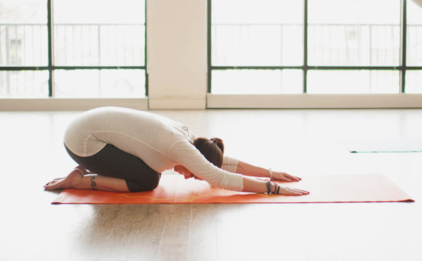Transform Your Body with Fitness and Physical Activity
Fitness and wellness go hand in hand, and physical activity is the key to achieving both. Regular exercise not only transforms your body, but it also benefits your mind and overall well-being. In this blog post, we’ll explore how physical activity can enhance your health, improve your fitness levels, and boost your sense of wellness. Whether you’re a seasoned athlete or a fitness newbie, these tips and insights will help you unlock your full potential and become the best version of yourself. Let’s get started!
Why Fitness and Physical Activity are Important
Benefits of Fitness and Physical Activity
Types of Physical Activity for Better Health
Starting Your Fitness Journey
Common Fitness Mistakes to Avoid
Nutrition and Hydration for Optimal Performance
How to Maintain a Consistent Fitness Routine
Overcoming Fitness Plateaus
Balancing Fitness with Rest and Recovery
Achieving Long-Term Success with Fitness and Physical Activity
Why Fitness and Physical Activity are Important

Fitness and physical activity play a critical role in achieving and maintaining a healthy lifestyle. Regular exercise not only helps you look good, but it also improves your physical and mental well-being. Incorporating fitness into your routine can positively impact every aspect of your life.
For starters, physical activity helps reduce the risk of chronic diseases such as obesity, type 2 diabetes, and heart disease. In addition, regular exercise can also improve cardiovascular health by reducing blood pressure, strengthening the heart and lungs, and improving blood circulation.
Another reason fitness and physical activity are essential is that they help maintain a healthy body weight and reduce the risk of obesity-related conditions. Exercise also helps build muscle and improve flexibility, reducing the likelihood of falls and injuries.
Regular physical activity also has mental health benefits. Exercise releases endorphins, the “feel-good” chemicals in the brain that help improve mood, reduce stress, and anxiety. In addition, fitness can improve sleep quality, energy levels, and overall quality of life.
Overall, the importance of fitness and physical activity cannot be overstated. Regular exercise is essential to maintaining a healthy body, mind, and lifestyle. By incorporating fitness into your routine, you can enjoy a wide range of benefits and improve your overall quality of life.
Benefits of Fitness and Physical Activity

It’s no secret that regular exercise and physical activity can have numerous benefits for your body, both physically and mentally. Here are some of the key benefits of incorporating fitness and physical activity into your lifestyle:
- Improved Physical Health: Regular physical activity helps maintain a healthy weight, strengthens bones and muscles, improves cardiovascular health, and reduces the risk of chronic diseases such as heart disease, diabetes, and some types of cancer.
- Enhanced Mental Health: Physical activity also has a positive impact on mental health by reducing symptoms of anxiety and depression, improving mood, and reducing stress levels.
- Increased Energy and Endurance: By improving cardiovascular health and strengthening muscles, regular physical activity can increase energy levels and overall endurance, making everyday tasks easier to accomplish.
- Better Sleep: Regular exercise has been linked to better quality sleep, helping to improve overall health and productivity.
- Boosted Immune System: Exercise can also boost the immune system by promoting the circulation of immune cells and reducing inflammation, making you less susceptible to illness.
- Increased Confidence: Physical activity can improve body image, self-esteem, and confidence levels, leading to an overall sense of empowerment.
Incorporating regular fitness and physical activity into your lifestyle can lead to numerous benefits, both physically and mentally. The key is to find an activity that you enjoy and can commit to regularly. With consistent effort, you can transform your body and achieve long-term health and wellness.
Types of Physical Activity for Better Health

Physical activity is an essential aspect of maintaining a healthy and fit body. Engaging in various forms of exercise can provide a multitude of benefits, including weight loss, increased muscle strength, improved heart health, and enhanced mental well-being. Here are some of the different types of physical activities that can help you achieve better health.
- Cardiovascular Exercises:
Cardiovascular or aerobic exercises are an excellent way to improve your heart health and respiratory system. Examples of cardiovascular exercises include walking, running, swimming, and cycling. These exercises increase your heart rate and improve circulation, delivering oxygen and nutrients to your body tissues, which can improve endurance, reduce stress, and lower the risk of chronic diseases. - Resistance Training:
Resistance or strength training is essential to maintain and increase muscle strength and tone. It also helps increase bone density, boost metabolism, and burn more calories. Exercises such as weightlifting, bodyweight exercises, or resistance band workouts can help improve your overall strength and flexibility. - Flexibility Training:
Flexibility exercises focus on increasing range of motion and preventing injuries. They involve stretching and relaxing muscles, ligaments, and tendons, which helps in enhancing balance and coordination. Examples include yoga, Pilates, or stretching exercises, which can help improve mobility, reduce stress, and enhance relaxation. - High-Intensity Interval Training (HIIT):
High-intensity interval training is a type of workout that involves alternating periods of intense activity and recovery. This form of exercise can improve cardiovascular health, burn fat, and increase muscle strength and endurance. Examples of HIIT workouts include running or cycling sprints, burpees, or jumping jacks. - Sports and Recreational Activities:
Participating in sports or recreational activities is an excellent way to get physically active while enjoying yourself. Examples include playing basketball, tennis, soccer, or even hiking, which can help burn calories, improve endurance, and boost overall health and wellness.
Starting Your Fitness Journey

Are you ready to embark on a journey to a healthier and more active lifestyle? Starting your fitness journey can be both exciting and daunting. Here are some tips to help you get started:
- Set Goals: Before you start any fitness routine, it’s important to set achievable goals. Determine what you want to achieve, whether it’s weight loss, building muscle, or improving your overall health. Make sure your goals are realistic and measurable.
- Consult a Professional: If you’re new to fitness or have any medical conditions, it’s always best to consult a fitness professional. They can help you create a personalized fitness plan and teach you proper form and technique.
- Start Slow: It’s important to start slow and gradually increase the intensity and duration of your workouts. Overdoing it in the beginning can lead to injury and burnout. Remember, fitness is a marathon, not a sprint.
- Find What You Enjoy: Find a physical activity that you enjoy and look forward to. It could be running, swimming, yoga, or weight lifting. Enjoying what you do will keep you motivated and consistent.
- Stay Accountable: Find a workout buddy or hire a personal trainer to keep you accountable. Having someone to share your journey with and hold you accountable can be very beneficial.
Starting your fitness journey can be challenging, but with these tips, you’ll be on your way to a healthier and more active lifestyle. Remember, the key to success is consistency and dedication. Keep pushing yourself, and you’ll be amazed at what you can achieve.
Common Fitness Mistakes to Avoid

Starting a fitness routine can be overwhelming, especially if you’re new to working out. With so much information available, it’s easy to make common fitness mistakes that can derail your progress. Here are some common mistakes to avoid:
- Skipping Warm-Up and Cool-Down
One of the biggest mistakes you can make is to skip warm-up and cool-down exercises. Warm-up exercises prepare your body for the workout and prevent injury. Cool-down exercises help your body recover after the workout and reduce muscle soreness. - Doing Too Much Too Soon
Another common mistake is doing too much too soon. It’s important to start slow and gradually increase your workout intensity. This helps your body adjust to the demands of exercise and reduces the risk of injury. - Neglecting Strength Training
Many people focus solely on cardio and neglect strength training. Strength training helps build muscle, increase metabolism, and improve overall health. Incorporate strength training exercises like squats, lunges, and push-ups into your routine.
Overtraining is another mistake that can hinder your progress. Rest days are essential for muscle recovery and preventing burnout. Listen to your body and take rest days when needed. - Ignoring Proper Form
Improper form can lead to injury and slow progress. Learn proper form for each exercise and focus on maintaining good form throughout the workout.
By avoiding these common fitness mistakes, you can maximize your results and reach your fitness goals faster. Remember, consistency is key, and small changes over time can lead to significant improvements in your health and fitness.
Nutrition and Hydration for Optimal Performance

Physical activity alone is not enough to achieve your fitness goals. Proper nutrition and hydration play a crucial role in optimizing your performance during workouts and promoting overall health.
Fueling your body with the right nutrients and staying hydrated can help you sustain energy levels, prevent injury, and enhance muscle recovery. Here are some tips to improve your nutrition and hydration habits:
- Eat a balanced diet: Your meals should include a variety of nutrient-dense foods, including lean protein, complex carbohydrates, healthy fats, and plenty of fruits and vegetables.
- Pre-workout nutrition: Fuel your body with carbohydrates before a workout to provide energy for your muscles. Some examples of pre-workout meals include oatmeal with fruit, rice cakes with almond butter, or a banana with peanut butter.
- Hydrate properly: Drink plenty of water throughout the day to stay hydrated. During a workout, aim to drink about 17-20 ounces of water for every hour of exercise.
- Post-workout nutrition: After a workout, refuel your body with a combination of carbohydrates and protein to aid in muscle recovery. Some examples include a smoothie with protein powder and fruit, a turkey sandwich on whole-grain bread, or grilled chicken with sweet potatoes and green beans.
- Avoid sugary drinks and processed foods: These can lead to a crash in energy levels and provide little nutritional value. Opt for natural, whole foods instead.
Remember that nutrition and hydration are not one-size-fits-all, and it’s important to listen to your body’s individual needs. Consult a registered dietitian for personalized nutrition recommendations to support your fitness journey.
How to Maintain a Consistent Fitness Routine

Starting a fitness routine is the first step towards a healthier lifestyle. However, maintaining consistency in your fitness routine is equally important. Consistency is the key to achieving your fitness goals and ensuring long-term success.
Here are some tips to help you maintain a consistent fitness routine:
- Set Realistic Goals: When setting fitness goals, it’s essential to be realistic. Setting unrealistic goals can lead to disappointment and loss of motivation. Start small and gradually increase your goals.
- Create a Schedule: Make a schedule that works for you. Whether it’s early in the morning or after work, find a time that you can consistently commit to exercising.
- Find a Workout Partner: Having a workout partner can help keep you motivated and accountable. It’s also more enjoyable to have someone to share the experience with.
- Mix it Up: Doing the same workout routine day after day can get boring. Mix it up with different exercises and activities to keep things interesting.
- Track Your Progress: Keep track of your progress by logging your workouts. This can help you see the progress you’ve made and motivate you to keep going.
- Reward Yourself: Set milestones for yourself and reward yourself when you achieve them. It could be something as simple as treating yourself to a favorite snack or buying a new workout outfit.
- Don’t Give Up: Remember that everyone has setbacks. Don’t give up if you miss a workout or don’t see immediate progress. Keep pushing forward and stay consistent.
Overcoming Fitness Plateaus

When you first start a fitness routine, you may notice rapid progress and positive changes in your body. However, after a while, you may hit a plateau where you don’t seem to be making any more progress. This can be discouraging and cause many people to give up on their fitness goals. But it’s important to know that plateauing is normal and there are ways to overcome it.
One of the most common reasons for hitting a plateau is because your body has adapted to your routine. Your muscles have gotten used to the same exercises, weights, and intensity level, so they don’t need to work as hard anymore. To overcome this, you can try switching up your routine by adding new exercises, increasing the weight or reps, or changing the intensity level.
Another reason for plateauing could be due to overtraining or not giving your body enough rest and recovery time. If you’re constantly pushing yourself without adequate rest, your body will eventually reach a point where it can no longer progress. To overcome this, make sure to schedule in rest days and give your body time to recover between workouts.
Nutrition is also an important factor in overcoming fitness plateaus. If you’re not fueling your body with the proper nutrients, it will be difficult to see progress. Make sure you’re consuming enough protein for muscle repair and growth, and getting the right balance of carbohydrates and fats for energy. Hydration is also key, as dehydration can negatively impact your performance.
Lastly, it’s important to have patience and not get discouraged. Plateauing is a natural part of the fitness journey and everyone goes through it. Remember why you started and focus on the progress you’ve made so far. With determination and consistency, you will overcome your plateau and continue to make progress toward your fitness goals.
Balancing Fitness with Rest and Recovery

When it comes to achieving optimal health and fitness, many people think that more is better. But in reality, it’s all about balance. It’s crucial to balance your fitness routine with rest and recovery in order to prevent injury and burnout. Here are some tips for achieving that balance:
- Schedule rest days: It’s important to schedule rest days into your fitness routine. This means taking a day off from your usual workout routine to let your body rest and recover. This doesn’t mean you have to be completely sedentary; you can still engage in gentle activities like yoga, stretching or walking.
- Listen to your body: Pay attention to how your body is feeling and adjust your workouts accordingly. If you’re feeling particularly fatigued or sore, take it easy and focus on rest and recovery. If you’re feeling energized and strong, you can push yourself a little harder.
- Incorporate active recovery: Active recovery means engaging in low-intensity exercise that helps to promote blood flow and muscle recovery. Examples of active recovery activities include walking, swimming, or yoga.
- Get enough sleep: Sleep is critical for muscle recovery and overall health. Aim for 7-8 hours of quality sleep per night to allow your body to fully rest and recover.
- Fuel your body: Proper nutrition and hydration are also crucial for rest and recovery. Make sure you’re consuming enough protein and healthy fats to help repair and rebuild your muscles. Hydration is also important to keep your body functioning properly.
By balancing your fitness routine with rest and recovery, you’ll be able to avoid burnout and achieve long-term success with your health and wellness goals. Remember, it’s all about finding a healthy balance that works for you and your lifestyle.
Achieving Long-Term Success with Fitness and Physical Activity

Fitness and physical activity are not a one-time endeavor but a lifestyle. Therefore, to achieve long-term success, it is crucial to integrate them into your everyday routine. Here are some tips to help you maintain your fitness journey:
Set realistic goals:
Setting realistic goals is essential to keep you motivated. Remember, it’s not a sprint, but a marathon. Set goals that are achievable, measurable, and time-bound. Once you achieve your goal, set a new one that challenges you further.
Track your progress:
Monitoring your progress can help you understand your growth and areas you need to work on. Keep a record of your fitness routines, nutrition intake, and measurements. By tracking your progress, you can adjust your plan as needed and celebrate your successes.
Motivation is critical to achieving long-term success. Surround yourself with people who support your fitness goals, join fitness communities, or hire a personal trainer. They can offer encouragement, accountability, and help you stay on track.
While it is important to stay committed to your fitness routine, it is also crucial to rest and recover. Burnout can occur if you overdo it, leading to injuries or exhaustion. Incorporate rest days into your routine, listen to your body, and make changes to your plan as necessary.
Celebrate your successes:
Achieving long-term success with fitness and physical activity is not easy, so it’s essential to celebrate your successes, no matter how small. Reward yourself when you achieve your goals, acknowledge your progress, and reflect on how far you’ve come.





